Your cart is currently empty!
Month: July 2024
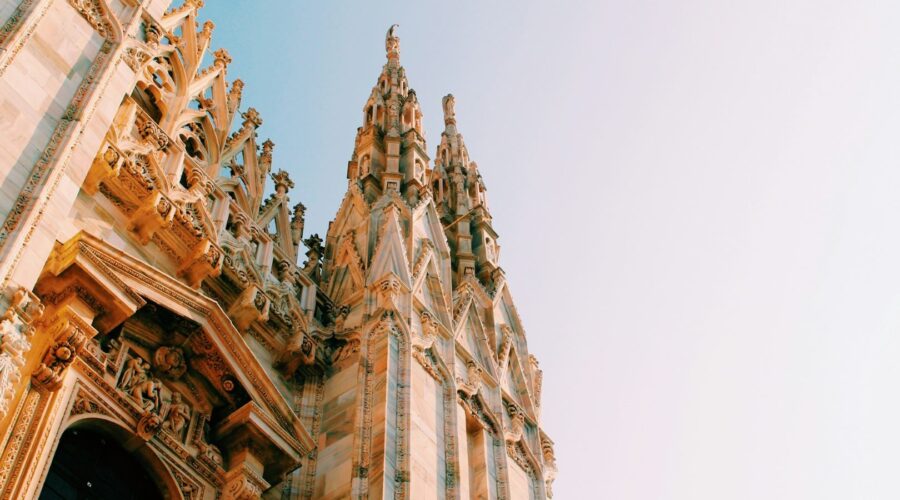
Unlock the Power of Daily Bible Readings: A Comprehensive Guide
Introduction: The Importance of Regular Bible Reading
Engaging in regular Bible readings offers a profound opportunity for spiritual growth, personal transformation, and a deeper understanding of God’s will. It nourishes our faith, provides guidance, and empowers us to navigate life’s challenges with wisdom and purpose.
Benefits of Daily Bible Reading
Spiritual Growth and Maturity
- Nourishes the soul with God’s truth and love
- Strengthens faith and trust in God’s plan
- Promotes spiritual discernment and a closer relationship with God
Personal Transformation and Character Development
- Inspires us to live a life that aligns with God’s values
- Provides practical guidance for overcoming temptations and challenges
- Helps cultivate virtues like love, patience, and humility
Understanding God’s Will and Purpose
- Reveals God’s character, attributes, and plans for humanity
- Provides insights into how God desires us to live
- Inspires us to align our lives with His mission and purpose
Practical Tips for Daily Bible Reading
Choosing a Bible Version
Select a translation that is readable and engaging, such as the NIV, ESV, or NLT.
Setting Aside Time
Establish a consistent time each day for Bible reading, even if it’s just for 15 minutes.
Creating a Reading Plan
Use a Bible reading plan or mobile app to guide your daily readings and cover different books of the Bible.
Practicing Active Reading
- Highlight or underline key verses
- Write down questions, reflections, or insights
- Discuss your readings with others or join a study group
Understanding Context
Read the surrounding verses and chapters to grasp the full context and meaning of the passages.
Pray Before and After Reading
Pray to ask God for guidance, understanding, and inspiration before and after reading.
Resources for Daily Bible Reading
Bible Reading Plans
Bible Commentaries
Bible Study Groups
Contact your local church or Christian organizations for Bible study groups and opportunities.
Conclusion
Daily Bible reading is a transformative practice that empowers us to grow spiritually, become more Christ-like, and deepen our understanding of God’s will. By incorporating these practical tips and resources into our daily routines, we can unlock the power of God’s Word and experience its transformative impact on our lives.
Remember, the Bible is not merely a collection of ancient texts but a living document that speaks to our hearts today. Embrace the opportunity to engage with it daily and allow its wisdom and truth to shape your life into the masterpiece it was meant to be.
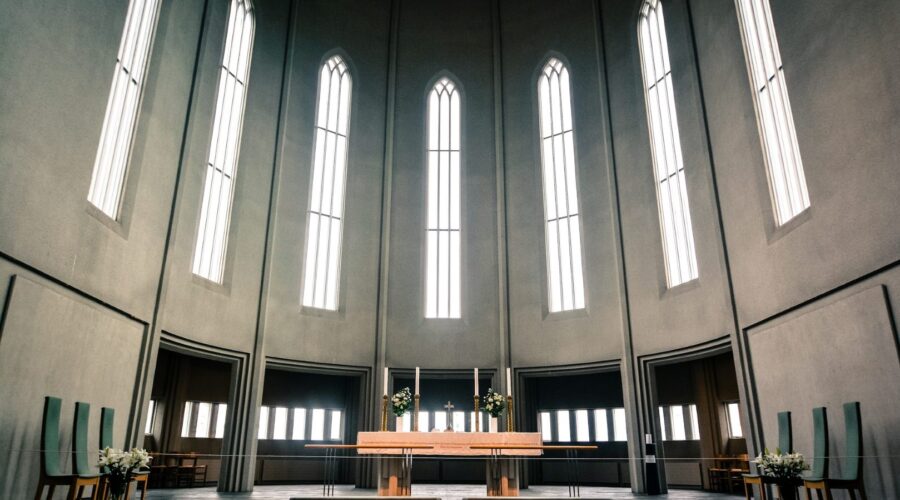
The Holy Family: A History and Meaning in Christianity
Introduction
The Holy Family refers to the household of Jesus, Mary, and Joseph. It is a central figure in Christian art and literature, symbolizing the love, faith, and hope that form the foundation of Christian belief. The Holy Family is also a reminder of the importance of family in the Christian tradition.
The History of the Holy Family
The story of the Holy Family begins with the birth of Jesus in Bethlehem. According to the Gospel of Matthew, Mary was a virgin who was pregnant by the Holy Spirit. Joseph, her betrothed, was initially skeptical but was later convinced by an angel that the child was from God.
After Jesus’ birth, the Holy Family fled to Egypt to escape the wrath of King Herod, who had ordered the slaughter of all male children in Bethlehem. They lived in Egypt for several years before returning to Nazareth.
Jesus spent his childhood in Nazareth, where he learned the trade of carpentry from Joseph. He also studied the Scriptures and began to preach the gospel of the kingdom of God.
When Jesus was about 30 years old, he left Nazareth and began his public ministry. He preached throughout Judea and Galilee, gathering a group of disciples who followed him.
The Holy Family played an important role in Jesus’ ministry. Mary was always present at his side, and Joseph provided support and guidance. The disciples also considered the Holy Family to be their own family.
After Jesus’ death and resurrection, the Holy Family continued to be an important part of the Christian community. Mary and Joseph lived in Jerusalem with the disciples, and they helped to spread the gospel of Jesus Christ.
The Meaning of the Holy Family
The Holy Family is a symbol of many different things in Christianity. It is a symbol of the love between God and humanity, the importance of family, and the hope that is found in Jesus Christ.
The Holy Family also represents the Christian ideal of family life. It is a model of love, respect, and cooperation. The Holy Family shows us that family is not just about blood ties but also about the bonds of love and faith.
The Holy Family in Art and Literature
The Holy Family has been a popular subject in art and literature for centuries. Artists have depicted the Holy Family in a wide variety of styles, from the realistic to the symbolic. Some of the most famous paintings of the Holy Family include Leonardo da Vinci’s “Madonna of the Rocks” and Raphael’s “Sistine Madonna.”
The Holy Family has also been a popular subject in literature. Many works of fiction and non-fiction have been written about the Holy Family, including books, plays, and films. Some of the most famous works of literature about the Holy Family include Charles Dickens’ “A Christmas Carol” and Mark Twain’s “The Adventures of Tom Sawyer.”
Conclusion
The Holy Family is a central figure in Christian art and literature, symbolizing the love, faith, and hope that form the foundation of Christian belief. The Holy Family is also a reminder of the importance of family in the Christian tradition.
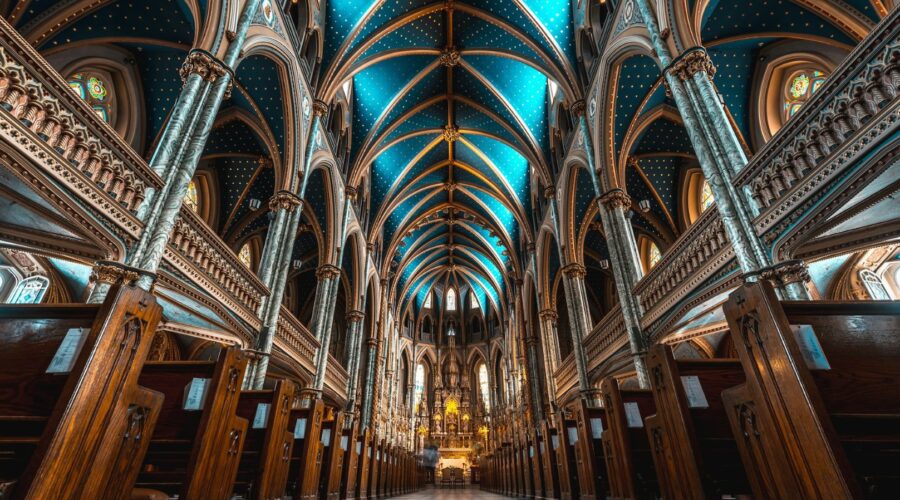
Unveiling the Rich History and Sacred Significance of Holy Family Catholic Church
A Journey Through Time and Faith
Embark on a pilgrimage through the hallowed halls of Holy Family Catholic Church, a spiritual sanctuary that has witnessed centuries of devotion and the unwavering faith of generations. This enchanting edifice, adorned with intricate artwork and reverent ambiance, invites you to immerse yourself in a sacred realm where tradition intertwines with modern-day spirituality.
The Genesis of a Faith Community
The story of Holy Family Catholic Church begins in the 1800s, when a small group of devout Catholics sought to establish a parish in the burgeoning community of Pueblo, Colorado. In 1867, Bishop Macheboeuf of Denver granted their request, and the humble beginnings of the church were laid.
The first church building, a modest adobe structure, was erected in 1871 and served as the cornerstone of the community’s faith for over three decades. As the congregation grew, the need for a larger and more stately edifice became apparent.
A Visionary Design: The Majestic Sanctuary
In 1902, the cornerstone was laid for the present-day church building, a testament to the dedication and vision of its parishioners. Inspired by the Gothic Revival style, the church features soaring arches, stained glass windows, and intricate carvings that create an atmosphere of awe and reverence.
- Stained Glass Windows: The vibrant hues of the stained glass windows narrate scenes from the Bible, capturing the essence of biblical stories and inspiring contemplation.
- Pointed Arches: The graceful pointed arches characteristic of Gothic architecture symbolize the upward aspiration of the human spirit towards heaven.
- Vaulted Ceilings: The high vaulted ceilings create a sense of spaciousness and grandeur, lifting hearts and minds to the divine.
A Sacred Tapestry: Liturgical Art and Devotion
Beyond its architectural grandeur, Holy Family Catholic Church is adorned with a wealth of liturgical art that enriches the worship experience.
- Altarpieces: The main altar is adorned with a breathtaking altarpiece depicting the Holy Family, while side altars feature scenes from the life of Christ.
- Statuary: Revered statues of saints and angels grace the church, inviting contemplation and fostering a connection with the celestial realm.
- Vestments and Paraments: The rich colors and intricate embroidery of the vestments and paraments used during liturgical celebrations add solemnity and beauty to the rituals.
Community at the Heart: Outreach and Service
Holy Family Catholic Church is not merely a place of worship; it is a vibrant hub of community life and outreach. The parish offers a wide range of programs and ministries to cater to the diverse needs of its members, including:
- Community Outings: Fellowship and recreation are fostered through organized outings, picnics, and social events.
- Education and Faith Formation: Bible study groups, RCIA programs, and youth programs provide opportunities for spiritual growth and understanding.
- Social Justice Initiatives: The church actively supports organizations that provide assistance to the homeless, the hungry, and the marginalized.
A Legacy of Faith and Inspiration
Throughout its history, Holy Family Catholic Church has weathered storms and celebrated triumphs, remaining an enduring symbol of faith, hope, and community. Its doors remain open, welcoming all who seek a spiritual home, a glimpse of the divine, and a sense of belonging within the embrace of God’s love.
Historical Timeline
Year Event 1867 Bishop Macheboeuf grants permission for the establishment of a Catholic parish in Pueblo. 1871 The first church building, an adobe structure, is erected. 1902 The cornerstone is laid for the present-day church building. 1905 The church is dedicated and becomes the spiritual home of the Holy Family Catholic community. 1982 The church is listed on the National Register of Historic Places. Present Holy Family Catholic Church continues to serve as a vibrant center of faith and community in Pueblo. Contact Information
For further information or to explore the possibility of becoming part of this faith community, please contact:
[email protected]
(719) 542-1234Visiting the Church
Holy Family Catholic Church is located at:
123 Main Street
Pueblo, Colorado 81001
Mass Times
- Sunday: 8:00 AM, 10:30 AM, Noon
- Monday-Friday: 7:30 AM
- Saturday: 5:00 PM (vigil)
Conclusion
Holy Family Catholic Church invites you to embark on a journey of faith, spirituality, and community. Whether you seek a sanctuary for prayer, a source of inspiration, or an opportunity to make a difference in the world, the doors of this sacred place are open to all who seek a connection with the divine.
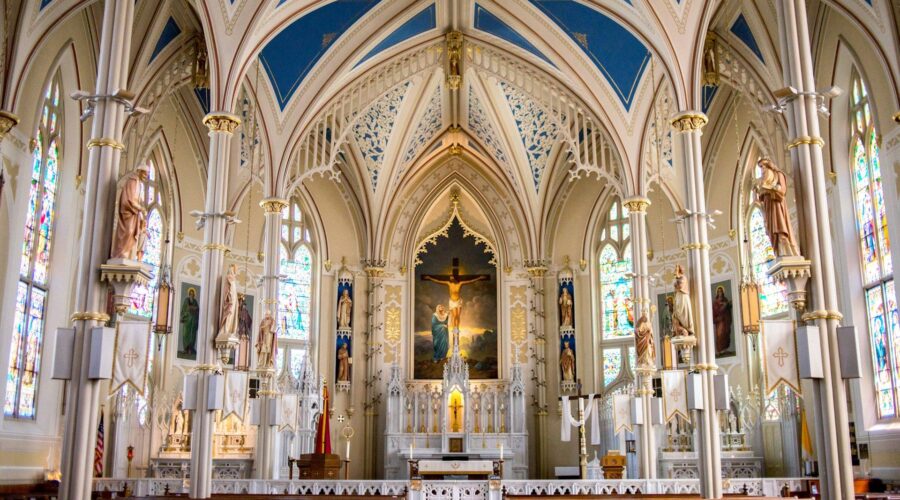
Grace Cathedral: A House of Prayer for All People
Grace Cathedral is an Episcopal cathedral in San Francisco, California, the seat of the Episcopal Diocese of California. It is one of the largest cathedrals in the United States, and its distinctive Gothic Revival architecture makes it a landmark of the city.
History
The cathedral was founded in 1849 as a small wooden church called Grace Chapel. As the city grew, so did the congregation, and in 1862 the chapel was replaced by a larger stone church. In 1928, the church was designated as a cathedral, and in 1934 the current building was completed.
Architecture
Grace Cathedral is a masterpiece of Gothic Revival architecture. The building is constructed of granite and sandstone, and its exterior is adorned with intricate carvings and sculptures. The interior of the cathedral is equally impressive, with its high vaulted ceilings, stained glass windows, and marble floors.
The nave
The nave is the central part of the cathedral, and it is where the congregation gathers for worship. The nave is flanked by two aisles, and it is lit by a series of large stained glass windows. The windows depict scenes from the Bible, and they are a beautiful example of the art of stained glass.
The chancel
The chancel is the area of the cathedral where the altar is located. The chancel is raised above the nave, and it is separated from the nave by a rood screen. The rood screen is a carved wooden screen that depicts scenes from the Passion of Christ.
The Lady Chapel
The Lady Chapel is a small chapel located on the east end of the cathedral. The chapel is dedicated to the Virgin Mary, and it is a popular place for prayer and meditation. The Lady Chapel is decorated with a series of beautiful stained glass windows, and it has a small altar.
Music
Music plays an important role in the life of Grace Cathedral. The cathedral has a world-renowned choir, and it hosts a variety of concerts and recitals throughout the year. The cathedral’s organ is one of the largest in the United States, and it is a popular instrument for concerts and recordings.
Community outreach
Grace Cathedral is committed to serving the community. The cathedral offers a variety of programs and services, including:
* A soup kitchen
* A homeless shelter
* A food pantry
* A counseling center
* A job training programThe cathedral also hosts a variety of community events, including:
* Concerts
* Lectures
* Art exhibitions
* Film screeningsVisiting Grace Cathedral
Grace Cathedral is open to the public seven days a week. Visitors are welcome to attend services, explore the cathedral, or simply enjoy the beauty of the building.
Services
Grace Cathedral offers a variety of services throughout the week, including:
* Sunday services
* Weekday services
* Special servicesTours
Tours of Grace Cathedral are available seven days a week. Tours are led by knowledgeable guides, and they provide an in-depth look at the cathedral’s history, architecture, and art.
Admission
Admission to Grace Cathedral is free. However, donations are always welcome.
Conclusion
Grace Cathedral is a beautiful and inspiring place. It is a place where people can come to worship, to learn, and to serve. The cathedral is a landmark of San Francisco, and it is a must-see for visitors to the city.
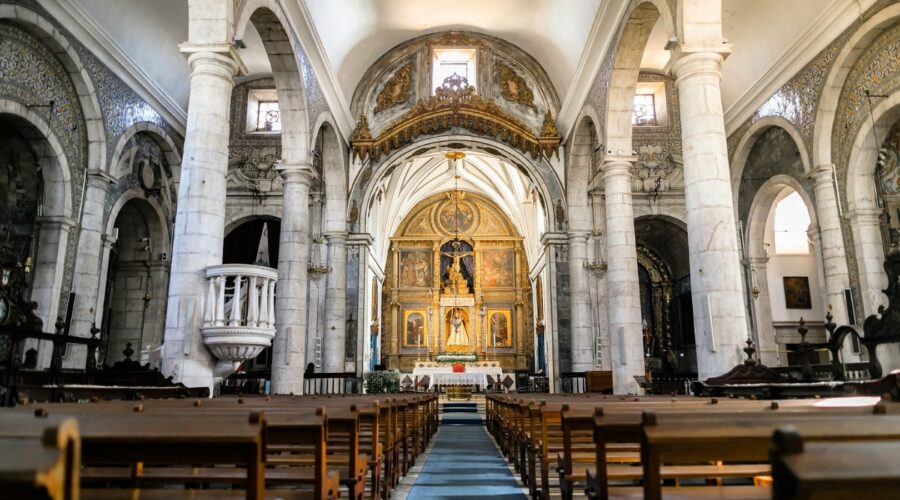
Anima Christi: Exploring the Prayer of Divine Mercy and Renewal
Introduction
The Anima Christi prayer is a timeless devotion that has inspired countless believers throughout history. It is a profound expression of faith and communion with the divine, offering a pathway to spiritual renewal and the experience of God’s grace.
Origin and History
The origin of the Anima Christi prayer is shrouded in mystery, with various attributions to saints and theologians. However, its early appearance can be traced back to 14th-century Germany, where it was used as part of a Dominican liturgy. Over the centuries, the prayer gained widespread popularity, becoming a beloved devotion among both clergy and laity.
Structure and Meaning
Verse 1: Imploring Christ’s Presence
- Anima Christi, sanctifica me (Soul of Christ, sanctify me)
This verse is a plea to Christ, asking for his sanctifying grace to transform and purify the soul.
Verse 2: Seeking Christ’s Protection
- Corpus Christi, salva me (Body of Christ, save me)
- Sanguis Christi, inebria me (Blood of Christ, inebriate me)
These verses express a desire for Christ’s protection and nourishment. The soul seeks refuge in his body and is intoxicated by his blood, which is a symbol of his life-giving grace.
Verse 3: Yearning for Christ’s Love
- Aqua lateris Christi, lava me (Water from the side of Christ, wash me)
- Passio Christi, conforta me (Passion of Christ, strengthen me)
These verses highlight Christ’s love and sacrifice. The soul asks to be cleansed by the water that flowed from his side and to be strengthened by the memory of his suffering.
Verse 4: Embracing Christ’s Spirit
- O bone Jesu, exaudi me (O good Jesus, hear me)
- Intra vulnera tua absconde me (Hide me in your wounds)
In these lines, the soul expresses its trust in Christ and its desire to be hidden within his wounds. This represents a longing for protection and communion with the divine.
Verse 5: Seeking Christ’s Presence in the Eucharist
- Ne permittas me separari a te (Do not let me be separated from you)
- Ab hoste maligno defende me (Defend me from the evil enemy)
- In hora mortis meae voca me (Call me at the hour of my death)
These final verses express a longing for Christ’s presence, both in life and at the time of death. The soul asks for protection from evil and for the promise of salvation.
Benefits of Praying the Anima Christi
Praying the Anima Christi prayer offers numerous benefits for those who practice it regularly:
- Spiritual growth and sanctification
- Increased devotion to Christ and his passion
- Protection from evil and temptations
- Comfort and strength in times of difficulty
- Preparation for a holy death
How to Pray the Anima Christi
The Anima Christi prayer can be recited in various ways:
- Traditionally: Pray the prayer as structured above, reflecting on each verse.
- Meditatively: Spend time contemplating each verse, allowing its meaning to sink deeply into your heart.
- As a mantra: Repeat the prayer multiple times, focusing on the words and connecting with their spiritual significance.
Example Litany
The Anima Christi prayer can be expanded into a litany by adding additional verses:
- Cor Jesu pium, sanctifica me (Pious heart of Jesus, sanctify me)
- Latera Christi aperta, lava me (Open wounds of Christ, wash me)
- Os Christi suavissimum, exhilarora me (Sweetest mouth of Christ, gladden me)
- Divinitas Christi, attrahe me (Divinity of Christ, attract me)
- In aeternum adorare te, praesta mihi (Grant me to adore you eternally)
Conclusion
The Anima Christi prayer is a timeless treasure that offers a profound connection with God. Through its powerful words, we can implore Christ’s sanctifying grace, seek his protection, yearn for his love, embrace his Spirit, and prepare for our ultimate journey. By incorporating this prayer into our daily lives, we open ourselves to the transformative power of divine mercy and renewal.
May the Anima Christi prayer illuminate your path, deepen your faith, and bring you closer to the heart of our loving God.
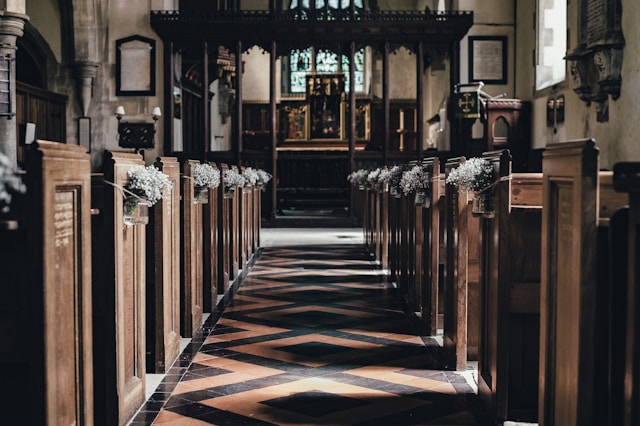
Discover the Berean Baptist Church: A Haven of Faith, Fellowship, and Community
Embark on a journey into the heart of the Berean Baptist Church, where faith, fellowship, and community intertwine. This comprehensive guide will illuminate the key aspects of this vibrant church, offering an in-depth exploration of its history, beliefs, ministries, and impact.
History and Background
Founded in 1955, the Berean Baptist Church traces its roots back to a humble group of believers who sought a church that adhered strictly to biblical principles. Over the decades, the church has grown exponentially, establishing itself as a prominent spiritual beacon in its community.
Biblical Foundations
At the core of the Berean Baptist Church’s beliefs lies an unwavering commitment to the inerrancy and authority of the Holy Bible. The church holds that the Bible is the sole source of ultimate truth and the guide for all matters of faith and practice.
Learn More About the History of Berean Baptist Church
Ministries and Outreach
The Berean Baptist Church is actively involved in a wide range of ministries that cater to the spiritual, emotional, and practical needs of its congregation and the surrounding community. These ministries include:
- Sunday School and Bible Study Groups
- Youth Ministry
- Children’s Ministry
- Music and Worship Ministry
- Community Outreach Programs
Pastoral Leadership
The Berean Baptist Church is blessed with a dedicated team of pastors and leaders who provide spiritual guidance, mentorship, and oversight. The church’s Senior Pastor, Dr. David Allen, is a renowned Bible teacher and author who has served the church for over 30 years.
Meet the Pastoral Staff of Berean Baptist Church
Community and Fellowship
Beyond its ministries and outreach programs, the Berean Baptist Church fosters a strong sense of community and fellowship among its members. The church hosts regular events, such as potlucks, picnics, and retreats, to encourage connection and spiritual growth.
Worship Services
Worship services at the Berean Baptist Church are characterized by their reverence, passion, and focus on the Word of God. The church offers multiple services throughout the week, including:
- Sunday Morning Service
- Sunday Evening Service
- Wednesday Night Bible Study
View Worship Times and Service Information
Impact and Legacy
The Berean Baptist Church has had a profound impact on its community and beyond. Through its unwavering commitment to biblical principles, its compassionate outreach programs, and its vibrant worship services, the church has touched the lives of countless individuals.
Membership and Involvement
Membership at the Berean Baptist Church is open to all believers who share the church’s doctrinal beliefs and desire to follow Jesus Christ. The church invites all those who seek a close relationship with God and a community of faith to join its congregation.
Contact the Berean Baptist Church
Conclusion
The Berean Baptist Church stands as a testament to the power of faith, fellowship, and community. Its steadfast adherence to biblical principles, its vibrant ministries, and its compassionate outreach programs have established it as a spiritual haven and a beacon of hope in its community. Whether you are seeking a deeper connection with God, a supportive spiritual family, or a church that actively serves its neighborhood, the Berean Baptist Church invites you to discover the joy and fulfillment that can be found within its walls.
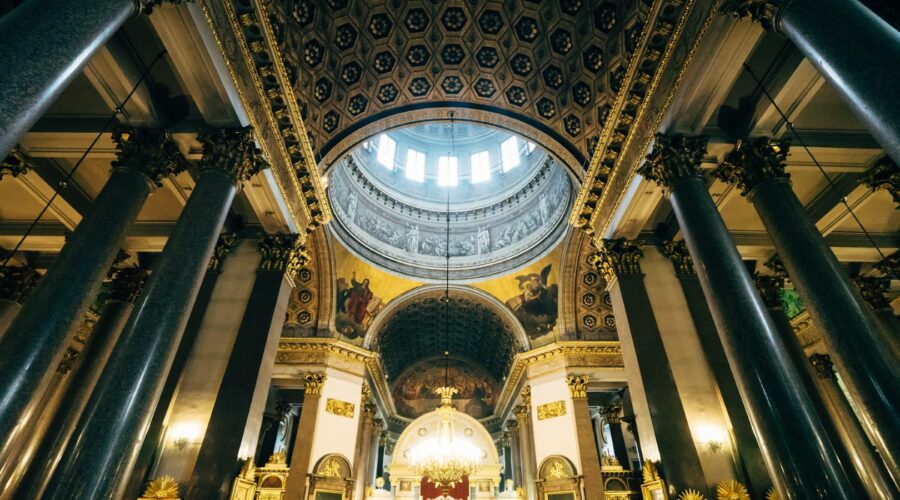
Unveiling the Significance of Sunday Catholic Mass: A Comprehensive Guide
Sunday Mass is the central liturgical event for Catholics, a time to gather as a community to worship God, receive the Eucharist, and deepen their faith. Attending Mass on Sundays is an integral part of Catholic life, offering numerous spiritual benefits and fostering a sense of belonging within the Church.
Importance of Sunday Catholic Mass
- Encounter with God: Mass is an opportunity for Catholics to come into the presence of God, to worship Him, and to receive His grace.
- Reception of the Eucharist: During Mass, Catholics receive the Body and Blood of Christ in the form of the Eucharist, which is the source and summit of Christian life.
- Community Building: Mass brings Catholics together as a community, fostering a sense of unity and belonging within the Church.
- Spiritual Renewal: Through the readings, homily, and prayers of Mass, Catholics are nourished spiritually and encouraged to live out their faith more fully.
- Fulfillment of Precept: Attending Mass on Sundays is a precept of the Catholic Church, which means it is a requirement for all baptized Catholics.
Structure of Sunday Catholic Mass
Sunday Mass follows a specific structure that includes the following parts:
Introductory Rites
- Entrance Procession
- Greeting
- Penitential Act
- Gloria (except during Lent)
- Opening Prayer
Liturgy of the Word
- First Reading
- Responsorial Psalm
- Second Reading
- Gospel Acclamation
- Gospel Reading
- Homily
- Creed
Liturgy of the Eucharist
- Preparation of the Gifts
- Prayer over the Offerings
- Eucharistic Prayer
- Consecration
- Our Father
- Sign of Peace
- Breaking of Bread
- Communion
Concluding Rites
- Prayer after Communion
- Announcements
- Blessing
- Dismissal
Tips for Attending Sunday Mass
* Arrive early: Allow yourself ample time to find a seat and prepare your heart for worship.
* Dress respectfully: Sunday Mass is a special occasion, so dress modestly and appropriately.
* Participate actively: Join in the prayers, responses, and hymns to fully engage in the liturgy.
* Receive the Eucharist: If you are properly prepared, approach the altar to receive the Body and Blood of Christ.
* Be reverent: Observe silence during the sacred moments of the Mass, such as the consecration and communion.
* Stay for the entire Mass: Commit to attending the entire liturgy, as each part is important for the full experience.
* Follow the readings: Bring a missal or use the app to follow along with the readings and prayers.
* Reflect on the homily: Pay attention to the homily and consider how it applies to your life.Benefits of Attending Sunday Mass Regularly
* Spiritual growth: Mass provides nourishment for the soul, helping Catholics to deepen their relationship with God.
* Community support: Regular attendance fosters a sense of community and support among fellow Catholics.
* Increased faith: Through the liturgy, readings, and homily, Mass strengthens the faith of Catholics.
* Fulfillment of obligation: Attending Mass fulfills the Catholic precept and shows obedience to the Church.
* Preparation for heaven: Mass is a foretaste of the heavenly banquet and prepares Catholics for eternal life.Conclusion
Sunday Catholic Mass is a vital part of Catholic life, offering numerous spiritual benefits and fostering a sense of community. By attending Mass regularly, Catholics can encounter God, receive the Eucharist, and grow in their faith. It is a time to worship, to receive grace, and to deepen one’s relationship with Christ and the Church.
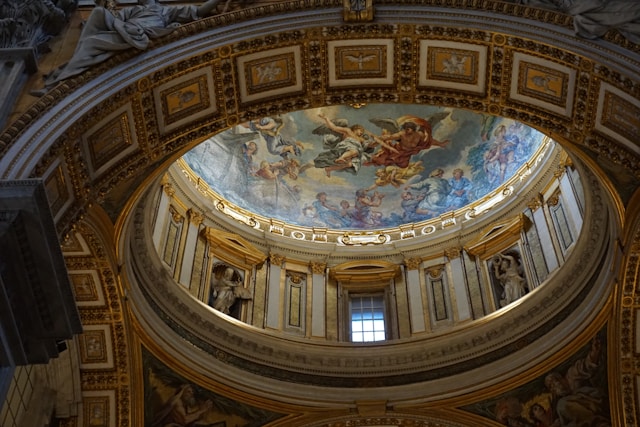
Knock Shrine: A Place of Pilgrimage, Peace, and Healing
Introduction
Knock Shrine, located in County Mayo, Ireland, is a prominent Catholic pilgrimage site and a place of profound spiritual significance. Known for its Marian apparitions and countless miracles, Knock Shrine attracts millions of pilgrims and tourists annually. Here’s a comprehensive guide to this sacred destination, its history, significance, and everything you need to know before visiting.
A History of Miracles
Knock Shrine’s history dates back to August 21, 1879, when 15 witnesses claimed to have witnessed an apparition of the Blessed Virgin Mary, Saint Joseph, Saint John the Evangelist, and a lamb on the gable wall of the local parish church.
The apparition, which lasted for two hours, occurred during a torrential downpour. Despite the heavy rain, the witnesses remained dry and unscathed. The event became known as the “Knock Apparition,” and it has been recognized by the Catholic Church.
Since the apparition, Knock Shrine has become a site of numerous miraculous healings and conversions. Pilgrims from all over the world have visited the shrine, seeking spiritual guidance, healing, and peace.
Significance of Knock Shrine
Knock Shrine holds immense religious and spiritual significance for Catholics worldwide. It is considered one of Ireland’s top pilgrimage sites and a place of prayer, devotion, and pilgrimage.
The shrine’s significance lies in its Marian apparitions, which are regarded as authentic by the Catholic Church. The Blessed Virgin Mary, known as Our Lady of Knock, is believed to have appeared at the shrine to convey a message of hope and peace.
Places to Visit at Knock Shrine
-
Apparition Chapel
: The Apparition Chapel is the central point of Knock Shrine. It was built on the spot where the apparition occurred in 1879. The chapel houses a statue of Our Lady of Knock and her companions.
-
Knock Museum
: The Knock Museum tells the story of the Knock Apparition and the history of the shrine. It displays artifacts, documents, and interactive exhibits related to the apparition and the shrine’s development.
-
Jubilee Gardens
: The Jubilee Gardens are a serene and peaceful area surrounding Knock Shrine. The gardens feature beautiful flowers, trees, and sculptures. Pilgrims can relax, pray, and reflect in the tranquil atmosphere.
Pilgrimages and Events
Knock Shrine is a popular destination for Catholic pilgrimages. Organized pilgrimages are held throughout the year, with the main pilgrimage season running from May to October.
The shrine also hosts various events, including Masses, prayer services, and festivals. The Knock Novena, a nine-day period of prayer and devotion, is a notable event that attracts thousands of pilgrims each year.
Tips for Visiting Knock Shrine
- Plan your visit in advance, especially if you are traveling during the pilgrimage season.
- Wear comfortable shoes as there is a lot of walking involved.
- Bring a raincoat or umbrella, as the weather in Ireland can be unpredictable.
- Be respectful of the religious nature of the shrine.
- Allow ample time to explore the shrine and attend services or events.
Conclusion
Knock Shrine is a destination of profound spiritual significance, offering a place of pilgrimage, peace, and healing. The shrine’s history, miraculous events, and beautiful surroundings continue to attract pilgrims and visitors from across the globe. Whether you are seeking spiritual guidance, seeking healing, or simply curious about its history, Knock Shrine is a place where you can find solace, peace, and renewal.
-
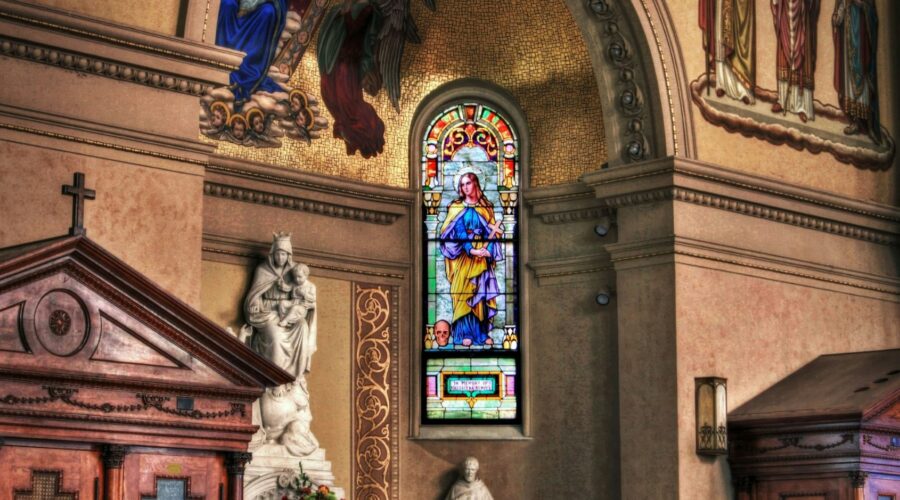
Alive Church: A Vibrant and Growing Community for Spiritual Enrichment
Are you seeking a vibrant and fulfilling spiritual community where you can connect with others, explore your faith, and grow closer to God? Look no further than Alive Church, a dynamic and welcoming church that has been transforming lives for years.
Discover the Heart of Alive Church
At Alive Church, we believe in the power of authentic relationships, transformative worship, and the life-changing message of Jesus Christ. Our mission is to create a space where people from all walks of life can experience God’s love, purpose, and hope.
Core Values
- Community: We foster a sense of belonging and connection, encouraging everyone to be authentic and accepted.
- Worship: We create vibrant and engaging worship experiences that connect hearts to God.
- Discipleship: We empower individuals to grow in their faith through mentorship, Bible study, and practical application.
- Service: We believe in serving others as an expression of God’s love, extending our reach to our community and beyond.
Weekly Gatherings for Spiritual Growth
Each week, we offer a variety of gatherings designed to meet the spiritual needs of our congregation:
Sunday Services
- 9:00 AM: Contemporary Service: A lively and uplifting service with modern worship music and relevant teaching.
- 11:00 AM: Traditional Service: A more formal service with classic hymns, liturgy, and thought-provoking sermons.
Midweek Gatherings
- Wednesday Night Connect Groups: Small group gatherings focused on Bible study, prayer, and community.
- Friday Night Youth Group: A dynamic and engaging program for youth ages 12-18, including worship, games, and spiritual discussions.
Ministries and Programs for All Ages
We offer a wide range of ministries and programs tailored to the needs of our diverse congregation:
Children’s Ministry
- Nursery Care: A safe and nurturing environment for infants and toddlers during services.
- Kids’ Church: Engaging and interactive classes for children ages 3-11, featuring Bible stories, games, and crafts.
Youth Ministry
- Youth Group: Regular meetings and activities for youth ages 12-18, fostering spiritual growth and community.
- Youth Worship Band: A group of talented youth musicians who lead worship at youth events and services.
Adult Ministry
- Connect Groups: Small groups for adults of all ages, providing a space for discipleship, prayer, and fellowship.
- Men’s and Women’s Ministries: Programs and events designed to meet the specific spiritual and practical needs of men and women.
- Marriage and Family Ministry: Resources and support for couples and families, including marriage counseling and parenting classes.
Missions and Outreach
We are committed to serving our community and sharing the love of Christ locally and globally:
- Local Partnerships: We work with local organizations to provide food, clothing, and support to those in need.
- International Mission Trips: We offer opportunities for individuals to serve and make a difference in communities around the world.
Join the Alive Church Family
If you are searching for a church that is alive, vibrant, and passionate about following Jesus Christ, we invite you to join us at Alive Church. We would love to welcome you into our community and help you take your next steps on your spiritual journey.
Visit our website at www.alivechurch.com or call us at (555) 123-4567 for more information. Come experience the joy and growth that awaits you at Alive Church!
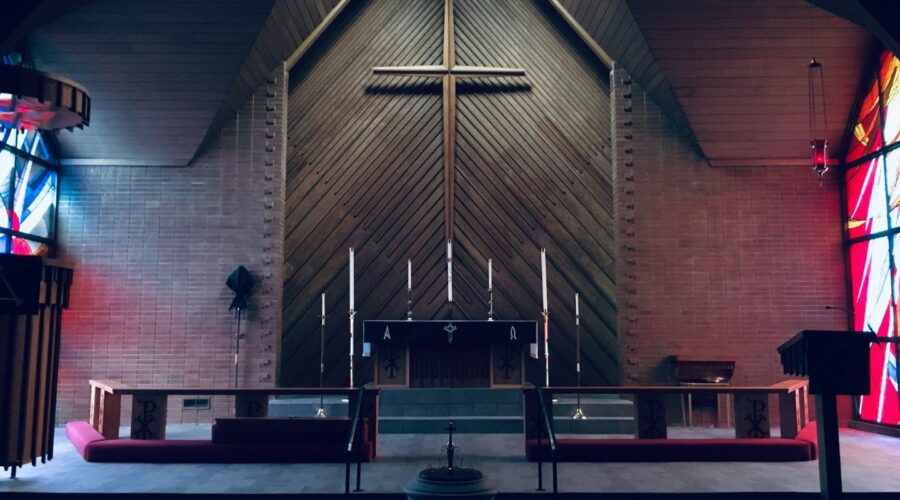
Catholic Daily Mass: A Pathway to Spiritual Growth and Connection with God
Introduction
Daily Mass is a cornerstone of Catholic life, offering a profound opportunity for spiritual growth, connection with God, and community involvement. By participating in this sacred sacrament, Catholics experience the transformative power of the Eucharist and delve deeper into their faith.
Benefits of Catholic Daily Mass
Spiritual Growth
- Deepens understanding of the Catholic faith and its teachings.
- Provides a daily dose of spiritual nourishment and inspiration.
- Nurtures an intimate relationship with Jesus Christ.
Connection with God
- Allows for direct communication with God through prayer and meditation.
- Offers a tangible means to receive God’s grace and presence.
- Enhances the ability to discern God’s will and purpose.
Community Involvement
- Fosters a sense of belonging to a faith community.
- Provides opportunities for fellowship and service.
- Strengthens the bonds between Catholics of all ages and backgrounds.
Key Elements of Catholic Daily Mass
Daily Mass consists of several essential elements that contribute to its richness and significance:
Liturgy of the Word
- Readings from Scripture that proclaim God’s message.
- Homily that interprets the Scriptures and provides spiritual insights.
- Prayer of the Faithful that intercedes for the needs of the world.
Eucharistic Liturgy
- Preparation of the gifts: Bread and wine are offered as symbols of sacrifice.
- Consecration: The priest prays over the gifts, transforming them into the Body and Blood of Christ.
- Communion: Catholics receive the Eucharist, establishing a deep connection with Jesus.
Concluding Rites
- Blessing: The priest imparts God’s blessing to the congregation.
- Dismissal: The Mass concludes with the invitation to “Go in peace to love and serve the Lord.”
Tips for Attending Catholic Daily Mass
- Be punctual: Arrive early to allow time for prayer and reflection.
- Dress respectfully: Modest and comfortable clothing is appropriate.
- Prepare your heart: Spend time in prayer and meditation before Mass.
- Participate fully: Engage in the responses, prayers, and singing.
- Receive Communion: If you are prepared, approach the altar to receive the Eucharist.
- Increased spiritual growth and maturity.
- Deeper understanding of the Catholic faith.
- Enhanced connection with God and Jesus Christ.
- Stronger sense of community and belonging.
- Greater resilience in facing life’s challenges.
Benefits of Attending Catholic Daily Mass
Conclusion
Catholic Daily Mass is a powerful and transformative experience that nourishes the soul, strengthens the spirit, and fosters a profound connection with God. By embracing this sacred sacrament as a regular part of their lives, Catholics embrace the opportunity for spiritual growth, community involvement, and unwavering faith.
Remember, the grace of God is abundant at every Daily Mass. Let us strive to make it a priority in our lives, reaping the countless benefits it offers.

Discover the United Church of Christ: A Progressive Faith Rooted in Tradition
Introduction:
The United Church of Christ (UCC) is a mainline Protestant denomination in the United States with a rich history and a commitment to progressive values. This comprehensive guide will delve into the key aspects of the UCC, exploring its beliefs, practices, history, and impact on society.
II. Beliefs and Teachings:
A. Centrality of Jesus Christ:
The UCC holds Jesus Christ as the center of its faith, believing that he is the savior and redeemer of humankind.
B. God as Trinity:
The UCC affirms the doctrine of the Trinity, recognizing God as Father, Son, and Holy Spirit.
C. Inclusive Love and Justice:
Central to UCC beliefs is the conviction that God’s love embraces all people, regardless of race, gender, sexual orientation, or social status. The denomination actively works towards justice and equality for all.
D. Importance of Scripture and Tradition:
While the UCC emphasizes the authority of Scripture, it also values tradition and reason as guides for faith and practice.
III. Practices and Worship:
A. Congregational Polity:
The UCC operates on a congregational polity, where each local church governs itself and elects its own leaders.
B. Worship Diversity:
UCC worship services vary widely, reflecting the diversity of its congregations. Some emphasize traditional liturgy, while others incorporate contemporary music and creative elements.
C. Open Table Communion:
The UCC practices open table communion, welcoming all baptized Christians, regardless of church affiliation, to partake in the sacrament.
D. Lay Ministry:
The UCC values lay leadership, empowering members to participate in all aspects of church life.
IV. History and Timeline:
The UCC traces its roots back to the Puritan settlements in New England. Key milestones include:
- 1630: Founding of the Massachusetts Bay Colony
- 1931: Merger of the Congregational and Christian Churches
- 1957: Formation of the United Church of Christ
- 1972: Ordination of the first openly gay pastor
V. Social Impact and Outreach:
A. Advocacy for Justice:
The UCC has long been a voice for social justice, advocating for civil rights, LGBTQ+ equality, and environmental protection.
B. Service and Mission:
UCC congregations engage in a wide range of service and mission programs, addressing issues such as poverty, homelessness, and healthcare.
C. Global Partnerships:
The UCC maintains partnerships with churches and organizations around the world, fostering interfaith dialogue and collaboration.
VI. Membership and Demographics:
The UCC has over 1 million members in approximately 5,000 congregations across the United States. While it has historically been primarily Caucasian, the UCC is increasingly diverse and includes a growing number of people of color.
VII. Controversies and Challenges:
A. Same-Sex Marriage:
The UCC’s support for same-sex marriage has sparked controversy within the denomination and among some conservative Christian groups.
B. Declining Membership:
The UCC, like many mainline Protestant denominations, has experienced a decline in membership in recent decades.
VIII. Conclusion:
The United Church of Christ stands as a beacon of progressive faith, embracing inclusivity, justice, and compassion. Through its beliefs, practices, history, and social impact, the UCC continues to make a meaningful contribution to society and the world.
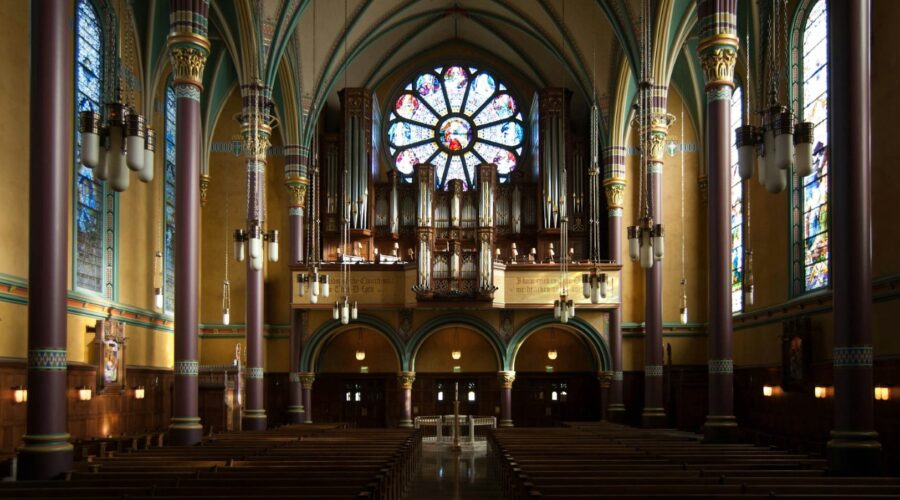
Unveiling the Enigma of the Holy Trinity: A Comprehensive Guide
Introduction
The concept of the Holy Trinity lies at the heart of Christian theology, representing the belief in one God existing in three distinct persons: the Father, the Son (Jesus Christ), and the Holy Spirit. This intricate yet fundamental doctrine has shaped Christian beliefs and practices for centuries, making it an essential subject of study for both believers and non-believers alike.
Historical Roots
Early Trinitarian Controversies
The idea of the Trinity began to take form in the early centuries of Christianity. However, it was not until the Council of Nicaea (325 CE) that the concept was formally articulated and declared orthodox. This council condemned the teachings of Arius, who denied the full divinity of Jesus Christ, affirming the belief that God the Father, God the Son, and the Holy Spirit were of the same substance and power.
Nicene Creed and Trinitarian Doctrine
The Nicene Creed, adopted at the Council of Nicaea, became the foundational statement of Trinitarian doctrine. It proclaimed, “We believe in one God, the Father Almighty, Maker of all things visible and invisible; And in one Lord Jesus Christ, the only-begotten Son of God, begotten of the Father before all worlds, God of God, Light of Light, very God of very God, begotten, not made, being of one substance with the Father; by whom all things were made; Who for us men and for our salvation came down from heaven, and was incarnate by the Holy Ghost of the Virgin Mary, and was made man; and was crucified also for us under Pontius Pilate; He suffered and was buried; and the third day He rose again according to the Scriptures; and ascended into heaven, and sitteth on the right hand of the Father; and He shall come again, with glory, to judge both the quick and the dead; whose kingdom shall have no end. And we believe in the Holy Ghost, the Lord and Giver of life, who proceedeth from the Father and the Son, who with the Father and the Son together is worshipped and glorified; who spake by the prophets.”
The Three Persons of the Trinity
The Holy Trinity is composed of three distinct persons, each possessing unique roles and attributes:
God the Father
- The creator and sustainer of all things
- The source of love, justice, and mercy
- The Father of Jesus Christ and the Father of all who believe in Him
God the Son (Jesus Christ)
- The incarnate Son of God who came to earth as a human being
- The savior who died on the cross to atone for the sins of humanity
- The Lord and mediator between God and humanity
God the Holy Spirit
- The third person of the Trinity who indwells believers
- The Helper who empowers, guides, and teaches
- The one who convicts of sin and leads to repentance
Unity and Distinction
While the three persons of the Trinity are distinct, they are also unified in essence. This unity is often described using the analogy of water. Water can exist in three distinct states (solid ice, liquid water, and gaseous steam) yet remains the same substance. Similarly, the Father, Son, and Holy Spirit are three distinct persons who share the same divine nature.
Implications for Christian Life
The doctrine of the Holy Trinity has profound implications for Christian life and practice:
Worship and Prayer
Christians worship God as one God in three persons. They address prayers to the Father, the Son, and the Holy Spirit, recognizing the distinct roles and attributes of each person.
Salvation and Redemption
The work of salvation is carried out by all three persons of the Trinity: the Father initiates it, the Son accomplishes it, and the Holy Spirit applies it.
Spiritual Growth and Formation
The indwelling presence of the Holy Spirit empowers believers to grow spiritually and live in accordance with God’s will.
Common Misconceptions
There are several common misconceptions about the Trinity that can be addressed:
Polytheism
The Trinity is not polytheism, which is the belief in multiple gods. Christians believe in one God who exists in three distinct persons.
Modalism
Modalism is the idea that the Trinity is a single person who manifests Himself in different modes or forms. This view contradicts the biblical teaching of three distinct persons.
Subordinationism
Subordinationism teaches that one person of the Trinity is subordinate to another. This view undermines the equality and unity of the three persons.
Conclusion
The Holy Trinity is a complex yet foundational doctrine of Christian theology. Understanding this intricate concept helps us to grasp the nature of God, the work of salvation, and the implications for our spiritual lives. By delving into the historical roots, exploring the three persons of the Trinity, and addressing common misconceptions, we can gain a deeper appreciation of this central tenet of Christian faith.
Remember, the study of the Holy Trinity is an ongoing journey that invites us to continually explore the depths of God’s nature and His relationship with humanity.